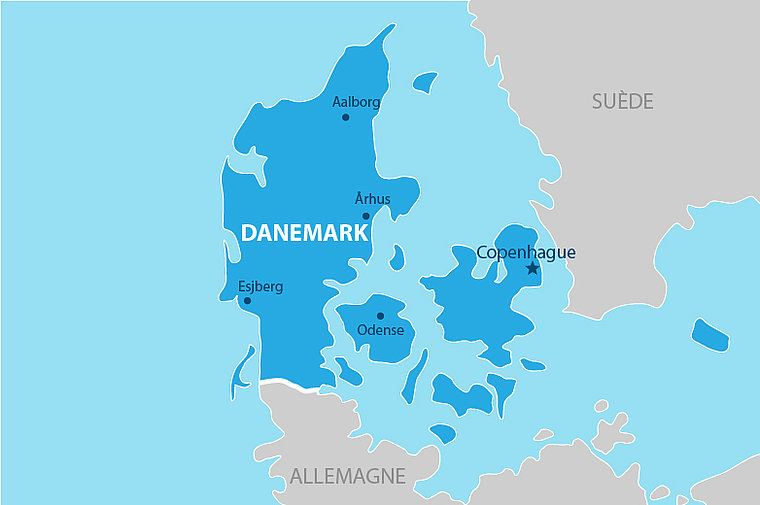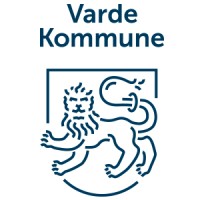Varde
Presentation of Danemark
Constitutional monarchy
National holiday: June 5
Official language: Danish
Country code: +45
Capital: Copenhagen
Area: 42,915 km²
Population: 5.78 million
EU membership since: 1973
Growth rate: 2.2%
Unemployment rate: 5.3%
Source : https://eacea.ec.europa.eu


The education system

Main features of the education system
Thèmes centraux du système éducatif danois
- L’éducation pour tous : Le système éducatif danois vise à garantir que tous les jeunes acquièrent les connaissances et les compétences qui leur permettront de participer activement à la société danoise de la connaissance et de contribuer à son développement ultérieur. L’éducation est ouverte à tous et généralement gratuite.
- Enseignement obligatoire : L’enseignement est obligatoire entre l’âge de 6 et 16 ans. L’enseignement obligatoire comprend dix années d’enseignement primaire et secondaire inférieur, dont une année préscolaire (classe 0) et neuf années scolaires (classe 1-9). Il est possible de prolonger la scolarité obligatoire d’une dixième année, mais cela reste facultatif.
- Apprentissage tout au long de la vie : au Danemark, il existe une tradition de participation à l’éducation tout au long de la vie, car une main-d’œuvre hautement qualifiée et bien formée joue un rôle décisif dans l’économie mondiale du savoir et est la clé du développement du Danemark en tant que société de la connaissance de premier plan.
- Autonomie gouvernementale : L’objectif premier des établissements d’enseignement autonomes est d’assurer un niveau élevé de qualité de l’enseignement, une gamme d’options éducatives pour les jeunes et les adultes et une large couverture géographique dans tout le pays. Les institutions ont la responsabilité indépendante des possibilités et du développement de l’éducation ainsi que du développement pédagogique.
En particulier, les établissements d’enseignement supérieur au Danemark ont une longue tradition de liberté académique et d’autonomie. Les ministères fixent les règles générales pour tous les établissements d’enseignement supérieur. Il s’agit notamment des règlements concernant l’admission des étudiants, l’organisation des études, les programmes proposés, la délivrance des diplômes et la nomination des enseignants et du personnel universitaire. Il incombe ensuite à chaque établissement d’élaborer et de mettre à jour ses programmes d’études, en indiquant les objectifs, la portée et la durée, la forme et le contenu des cours, ainsi qu’une description du programme.
Gouvernance et organisation du système éducatif danois
National legislation covers the objectives and framework of education, funding, and, in some cases, curricula, examinations, and staffing. The Danish education system is centrally managed by the following ministries:
-
The Ministry of Education
-
The Ministry of Higher Education and Science
-
The Ministry of Culture
-
The Ministry of Defence
However, education is primarily the responsibility of the Ministry of Children, Education and Gender Equality and the Ministry of Higher Education and Science.
The Ministry of Education is responsible for establishing the curriculum framework at the primary and lower secondary levels. The actual content of lessons is then developed by teachers themselves, in collaboration with their students. The Ministry of Education supervises primary and lower secondary schools (Folkeskole) in cooperation with municipal councils.
In the field of vocational education and training, sectoral committees—composed equally of representatives from relevant labour market organisations—play a key role in defining and developing vocational qualifications and training requirements. Technical colleges and business schools are independent institutions under the overall authority of the Ministry of Education.
The Ministry of Higher Education and Science is largely responsible for higher education. As mentioned earlier, some higher education programmes in the arts fall under the Ministry of Culture, such as visual arts schools and music academies. Specialised educational programmes within the Danish Defence are managed by the Ministry of Defence.
The stages of the education system
In Denmark, primary education consists of an integrated primary and lower secondary education. The institutions where primary and lower secondary education are provided are called primary and lower secondary schools (Folkeskole in Danish). Primary education is compulsory between the ages of 6 and 16 and includes one pre-school year (grade 0) followed by nine school years (grades 1-9).
At the end of primary and lower secondary education, students are free to choose the educational path they wish to follow. In summary, they must choose between upper secondary general academic programmes and upper secondary vocational programmes.
Upper secondary general education programmes are offered at various institutions, while some schools provide different types of programmes:
-
The upper secondary school leaving examination (STX), which lasts three years, takes place at upper secondary schools (gymnasium in Danish).
-
The higher commercial examination (HHX), lasting three years, is offered at upper secondary commercial schools, also called business colleges (handelsgymnasium in Danish).
-
The higher technical examination (HTX), lasting three years, is held at upper secondary technical schools, also known as technical colleges (teknisk gymnasium in Danish).
-
The two-year higher preparatory examination (HF) generally takes place at upper secondary schools (gymnasium), but the programme is also offered at adult education centres (VUC Centres).
The duration of the first three programmes mentioned is three years. Students typically start at age 16 and graduate at age 19, although this can vary depending on factors such as whether or not the student has completed a tenth year of schooling. The HF programme lasts two years, and the age range of students is very diverse.
The duration of vocational upper secondary education programmes varies depending on the specific programme, ranging from 1½ to 5½ years, with the most common duration being 3½ to 4 years. These programmes are offered at vocational/technical schools (erhvervsskole in Danish). The ages of students at the start and completion of these programmes vary significantly.
After completing upper secondary general education programmes and vocational upper secondary programmes, students have diverse training and education opportunities. Generally, upper secondary general education programmes provide access to higher education, whereas vocational upper secondary education typically leads to employment in the labour market.
Higher education is provided by various types of institutions:
-
Short-cycle programmes are offered at business academies (erhvervsakademi in Danish).
-
Medium-cycle programmes are offered at university colleges (professionshøjskole in Danish).
-
Long-cycle programmes are offered at universities (universitet in Danish).
Mobility Group
Organisation
City
Position
Cité scolaire Jacques Chirac
Marseille
Teacher
Cité scolaire Jacques Chirac
Marseille
Assistant Principal
Cité scolaire Jacques Chirac
Marseille
Language Teacher
Cité scolaire Jacques Chirac
Marseille
Administrative Secretary
Cité scolaire Jacques Chirac
Marseille
History and Geography Teacher
Rectorat
Marseille
IA-IPR Literature
Rectorat
Aix-en-Provence
IA-IPR EVS
Lycée La Calade Jane Vialle
Marseille
Assistant Principal
Host organisation
Institutional partner
Host organisations
Organisation
City
Level of education
xxx
Varde
Niveau lycée
xxx
Varde
L’école de formation professionnelle des instituteurs
xxx
Varde
L’école primaire
Presentation
Mobility group
Host organisations

